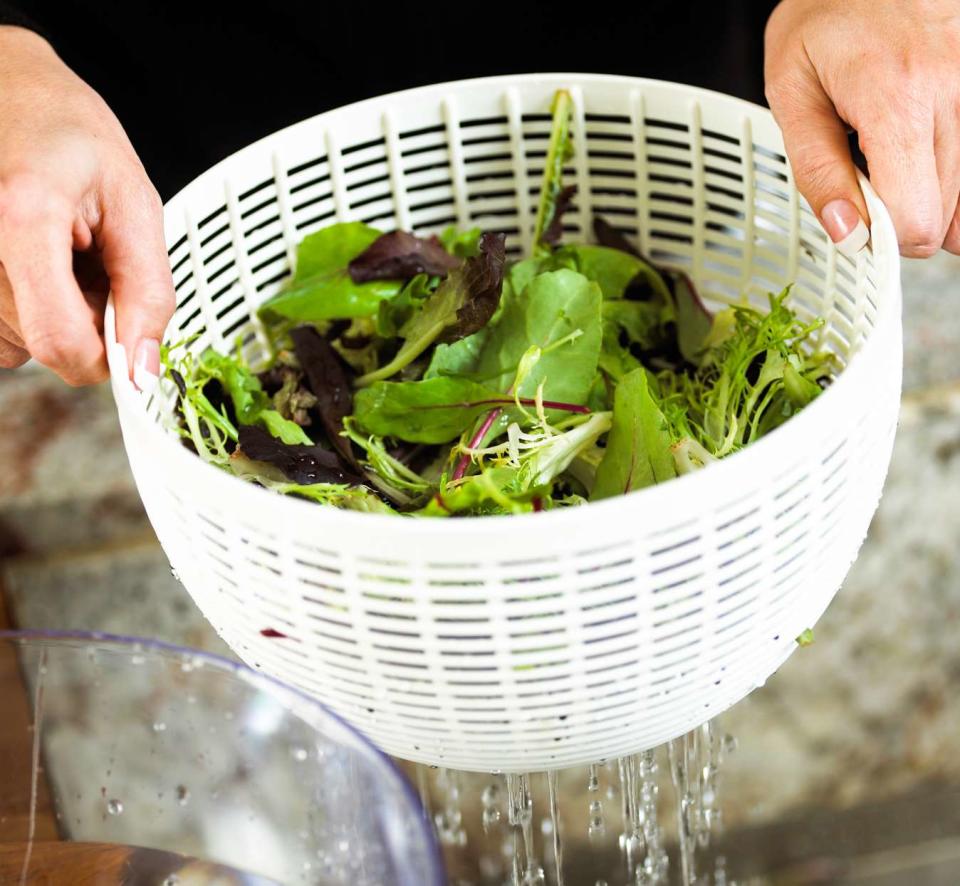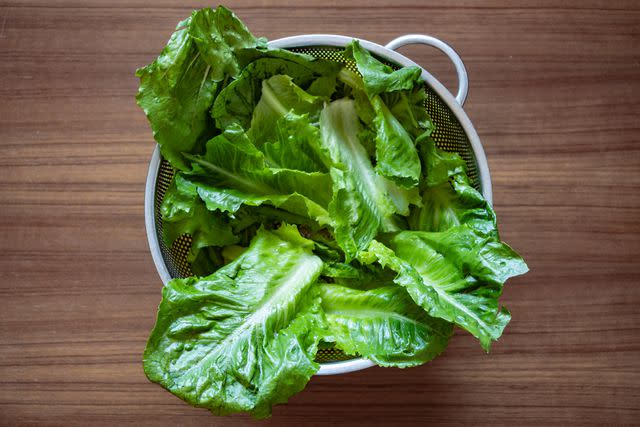How to Wash Lettuce With and Without a Salad Spinner
Our guide for how to wash lettuce will coach you through getting your greens salad-ready—and keeping them crunchy.

Bagged salads, romaine lettuce, and spinach have been frequent stars of food recall alerts in recent years. Unfortunately, fields of leafy greens are easy targets for E. coli contaminations due to proximity to animal farms, unsafe irrigation practices, composting mistakes, and more.
While these options for how to wash lettuce can't remove serious pathogens (cooking over 160° F should do the trick), washing greens is a food safety best practice if the vegetables are not already pre-washed. It will reduce the risk that you're consuming dirt, as well as any bugs, pesticides, or additional contaminants associated with your greens during harvest, transport, or handling.
Read on for our Test Kitchen's pro tips for how to wash lettuce in its most common varieties, be it iceberg, romaine, or butter lettuce; tender greens like arugula or spinach; or sturdier leaves like radicchio, kale, or collards.
Related: 12 Easy Spinach Salad Recipes to Add Healthy Greens to Your Diet

How to Wash Lettuce
If you have invested in bagged greens that are labeled "ready-to-eat," "no washing necessary," or "triple-washed," this means they're already clean, according to the CDC. There's no need to turn to these instructions for how to wash lettuce for these products. But in all other cases—whether you harvested the greens from your vegetable garden, scored them at your local farmers market, or bought them at the grocery store—read on to discover how to wash lettuce.
Related: 8 Cute Container Salad Gardens So You Can Grow Greens Anywhere
How to Wash Lettuce With a Salad Spinner
Since it makes meal prep much easier and more efficient, our Test Kitchen experts firmly believe that a salad spinner is worth the kitchen cabinet real estate. Here's how to wash lettuce if you, too, swear by your spinner.
Fill a large bowl with cold water.
Remove any damaged outer leaves and use a chef's knife to trim off the stem end of the lettuce, if present.
Separate the leaves, drop them into the bowl of water, and, using clean hands, swirl them around the bowl to dislodge any dirt or sand. Allow the greens to soak for about 2 minutes to let the debris fall into the bottom of the bowl. Lift the leaves out of the water and give them a peek: If you notice any remaining gritty pieces, change the water in the bowl and rewash the bunch.
Place the washed leaves in the salad spinner strainer, filling it no more than half full each batch. Pop on the lid and spin the leaves dry. Empty the water from the bowl and repeat with more leaves until the whole pile is dry.
On a clean dish towel or a couple of layers of paper towels, lay out the washed and spun leaves. Gently roll up the towel to wipe off any excess moisture and proceed with your recipe or store as explained below.
Related: The 8 Best Salad Spinners of 2023
How to Wash Lettuce Without a Salad Spinner
No salad spinner? No sweat. Follow steps 1 through 3 above, then place the washed leaves in a colander instead of a salad spinner. Allow the lettuce to drain well.
Proceed to step 5 of the how-to-wash lettuce guide above or store the greens in your refrigerator to use another time.
How to Store Lettuce to Keep It Fresh As Long As Possible
It's best to wash and dry your greens immediately before using them. When the refrigerator is set to about 35 to 38° F, unwashed greens generally last about 7 to 10 days.
But if you'd like to get a head start and pre-wash your leaves, be sure to dry them thoroughly after following the directions above for how to wash lettuce. Aim to use pre-washed greens within three days.
Store already-washed lettuce on a couple of layers of paper towels. Gently roll up the towels with the lettuce tucked inside; the paper towels will help absorb excess moisture (to slow wilting) while allowing a damp environment to remain (to prevent overly-dried leaves). Transfer this roll to a clean bag and place it in the crisper drawer of your refrigerator.
Related: 33 Fruits and Veggies You Should Refrigerate and 7 You Shouldn't
For more Better Homes & Gardens news, make sure to sign up for our newsletter!
Read the original article on Better Homes & Gardens.

